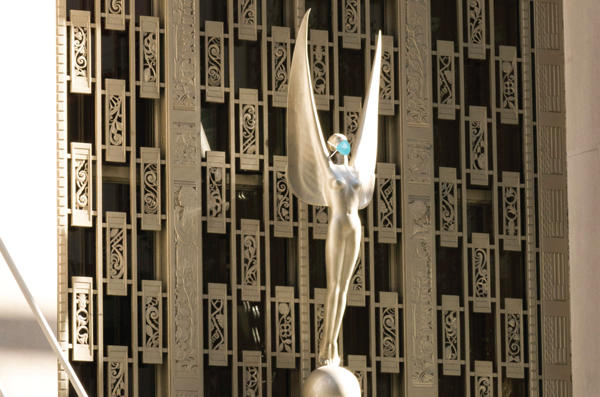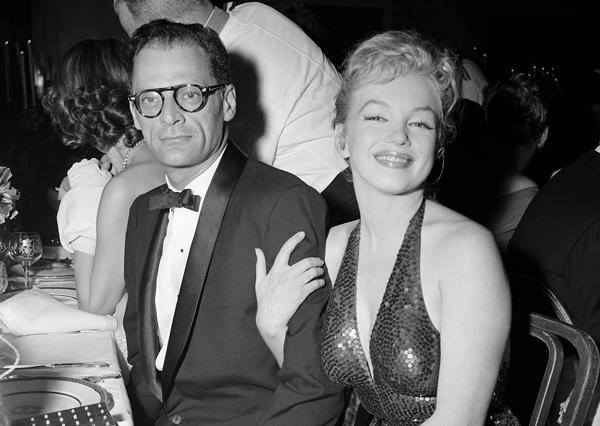Trending
The Waldorf Astoria’s big gamble
A $3 billion project launches sales as a global pandemic slams an already weak market. What could go wrong?

At a launch event for the refurbished Waldorf Astoria in early March, Douglas Elliman sales director Dan Tubb stood in front of a wall of screens flickering with black-and-white photographs of the hotel’s famous guests.
Marilyn Monroe, Winston Churchill and John F. Kennedy — all of them were part of the landmark’s storied history. Now, Tubb said, buyers could have their own piece of that legacy.
But outside the Park Avenue hotel, which is offering 375 residential condos for sale on the upper floors, a public health crisis was beginning to unfurl. The coronavirus had wreaked havoc in China and spread across the world, overwhelming health care systems and killing thousands. Within weeks, the number of cases in New York had surged, shutting down schools and confining millions of people to their homes.
The Waldorf’s highly anticipated sales launch — already challenged by the luxury market’s oversupply problem and the state’s new mansion tax — was plunged into unpredictable territory.
“It’s kind of unfortunate that they opened when they did,” said Donna Olshan of the boutique residential brokerage Olshan Realty. “It would have been better had they not gone to the market.”
By March 16, the project’s sales gallery was shut down.
“In consultation with each of our respected developer clients, we have decided to promote social distancing by physically closing,” a spokesperson for Douglas Elliman said, adding that virtual tours are now available.
Two days later, Andrew Miller, CEO of Dajia US, the Waldorf’s primary sponsor since last year, defended the timing. “Market and buyer enthusiasm for the project is incredibly high, yet we know and respect that people are likely focused on global events at the moment,” he said, noting that sales had launched to the brokerage community in late February.
 As the fast-spreading coronavirus batters the city’s already weak luxury market, it’s unclear if the Waldorf will emerge unscathed.
As the fast-spreading coronavirus batters the city’s already weak luxury market, it’s unclear if the Waldorf will emerge unscathed.
Olshan noted that the condominium-hotel hybrid was far from alone in its vulnerability to the pandemic. “Every property will be hit now,” she said. “No property is going to escape.”
With an opening slated for 2022, many in the industry are optimistic about the building’s chances. Some 75 units have been released for sale at prices ranging from $1.7 million for a studio to $18 million for a four-bedroom.
“Assuming the world gets back to normal sometime in the near future, I think the Waldorf will do very well,” said Nancy Packes, who tracks condo sales and believes the available units are reasonably priced. “The building itself is spectacular.”
Confidence in crisis
Before the pandemic, the Waldorf was facing another big hurdle: a glut of luxury inventory.
Large condominiums filled with unsold units reflect the challenges in today’s market: Foreign buyers are harder to come by, deals take longer, and discounts are the new normal. Experts predict the city’s unsold inventory will take up to 10 years to sell.
But Dajia’s Miller said he is confident foreign and domestic buyers will embrace what the Waldorf is offering, despite the conditions.
“I think a lot of people have been waiting for something that inspires the urgency to buy now,” he said. “Something that feels unique and irreplaceable, and fundamentally special.”
Dajia was established by the Chinese government in 2019 to handle the assets of the original developer, Anbang Insurance Group, which had been taken over by regulators in 2018. Known for its aggressive track record of foreign investment, Anbang had paid $1.95 billion for the Waldorf in 2015 and poured $1 billion into renovations.
The hotel portion of the building will include 375 rooms operated by Hilton. Above them, the residential units will be sweetened by access to 50,000 square feet of private amenities, including a spa, a 25-meter pool, a game room, an enclosed “winter garden” and four private bars.
Miller said the Waldorf’s sales team is available seven days a week for virtual showings. Like its peers across the city, it has had to adapt to an entirely new way of doing business — and fast. Contract activity at the Waldorf is unclear, though Miller reports getting thousands of inquiries from all over the world.
“Given the international renown of Waldorf Astoria New York, we have already completed virtual appointments for international buyers who have purchased sight unseen,” he said.
Banking on legacy
The Waldorf famously started life as two Fifth Avenue hotels — owned by feuding relatives — which were later joined together. It was sold to developers of the Empire State Building in 1929 and demolished. The second iteration, which occupies a full block between East 49th and East 50th streets, was the world’s largest hotel when it was built in 1931.
A beacon of opulence, the Waldorf over the years earned a reputation for drawing dignitaries and celebrities including Frank Sinatra, Sophia Loren and Elizabeth Taylor. While units were not for sale, the hotel rooms were treated as long-term residences for many guests, including Monroe, who moved into a suite in 1955, about the same time that her romance with the playwright Arthur Miller began, and former President Herbert Hoover, who lived there for some three decades.

After Anbang purchased the building, it brought on the architecture firm Skidmore, Owings & Merrill to work on the overhaul, which has been underway since 2017.
Given the hotel’s decorated heritage, the work has been a balancing act between honoring the building’s original Art Deco design and bringing in modern touches.
“This is both an exterior landmark and an interior landmark — two distinct designations in New York, so it’s the highest degree of difficulty,” said Skidmore’s Frank Mahan, who noted that his team worked closely with the Landmarks Preservation Commission on the project.
A separate entrance will be created for residents, to separate them from hotel traffic. “The Spirit of Achievement,” a winged statue by Icelandic artist Nina Saemundsson installed above the entrance when the hotel opened 89 years ago, has been brought indoors while work is ongoing but will eventually return to its original location.
Waldorf team members hope to create the impression that the building is accessible to a wide swath of buyers — setting it apart from luxury towers where the barrier to entry is several million dollars — though they acknowledge the Waldorf’s price points are still inaccessible for most.
Inside the model two-bedroom — a relatively modest offering compared to some of the larger units — soundproofing insulates the space from the usual city drone, and the room’s color palette is mostly muted: polished marble countertops, gray couches and bronze detailing. Interior designer Jean-Louis Deniot said the restrained atmosphere was intentional.
“It doesn’t have really a predefined style apart from the fact that, yes, it’s to remind you that you are part of the Waldorf Astoria,” he said.
In the bathroom, tiles feature a Waldorf-patterned motif.

Arthur Miller and Marilyn Monroe at the Waldorf in 1957
“Everything in the apartments in the Waldorf Astoria is very bespoke,” said Tubb, who left Corcoran Sunshine last August to market sales at the building for Elliman. “You’re not going to go out and find something on the shelf somewhere else. It’s all custom.”
Weathering turbulence
Anbang has been through an upheaval since its record-breaking deal to buy the storied hotel.
In February 2018, it was seized by the Chinese government as part of a crackdown on companies spending heavily on foreign assets. Three months later, Anbang’s chair, Wu Xiaohui, was sentenced to 18 years in prison for defrauding investors.
After regulators took over the firm, it was dismantled, and several of its foreign assets were sold. Those remaining were taken over by Dajia.
The developer’s gamble is not only that it can draw buyers to the iconic building, but that it can re-create the glory of the hotel. At the moment, though, the industry is in survival mode, struggling to navigate the swift and brutal economic fallout of the coronavirus pandemic. At some establishments in the city, occupancy reportedly dropped as low as 15 percent, and at least one — Ian Schrager’s Public on the Lower East Side — shut its doors. The long-term effects remain unknown.
“For the near term, hotel occupancy will be decidedly lower than before the pandemic started, and as for many businesses it may be as long as two years before ‘business as usual’ is conducted here and around the world,” said Barry LePatner, founder of construction law firm LePatner & Associates.
There were also some positive signs in the sales market, early on. Between March 9 and March 22, there were 35 contracts above $4 million signed in Manhattan, according to market reports by Olshan Realty. But halfway through that period, in-person showings were prohibited by the state, and contracts dropped as low as two in the week ending March 29.
At the Waldorf, with so many units to move, the redevelopment was always going to be risky. But Stephen Kliegerman, president of Halstead Development Marketing, said big projects typically plan for longer sellouts and a degree of unpredictability.
With that, come pitfalls.
“Large-scale projects become very difficult to plan out over time because you may be going through shifting economies and shifting marketplaces,” Kliegerman said.
In late February, Dajia’s two-year period of regulatory control ended, but the company is still looking to offload foreign assets. Since the outbreak of the coronavirus, at least one deal — to sell a $5.8 billion portfolio of U.S. hotels — has been thrown into peril, according to Bloomberg.
Miller declined to comment on the report but said there were no plans to sell the Waldorf. “I’m pleased — and occasionally a bit surprised — that that never came up as a real option,” he said.
“Everyone at Anbang and at the regulatory commission and now Dajia understood that the Waldorf Astoria is something unique and special,” Miller said. “Having embarked upon this journey to restore and reimagine the building, it was an obligation of everyone to see it through.”
Write to Sylvia Varnham O’Regan at so@therealdeal.com




